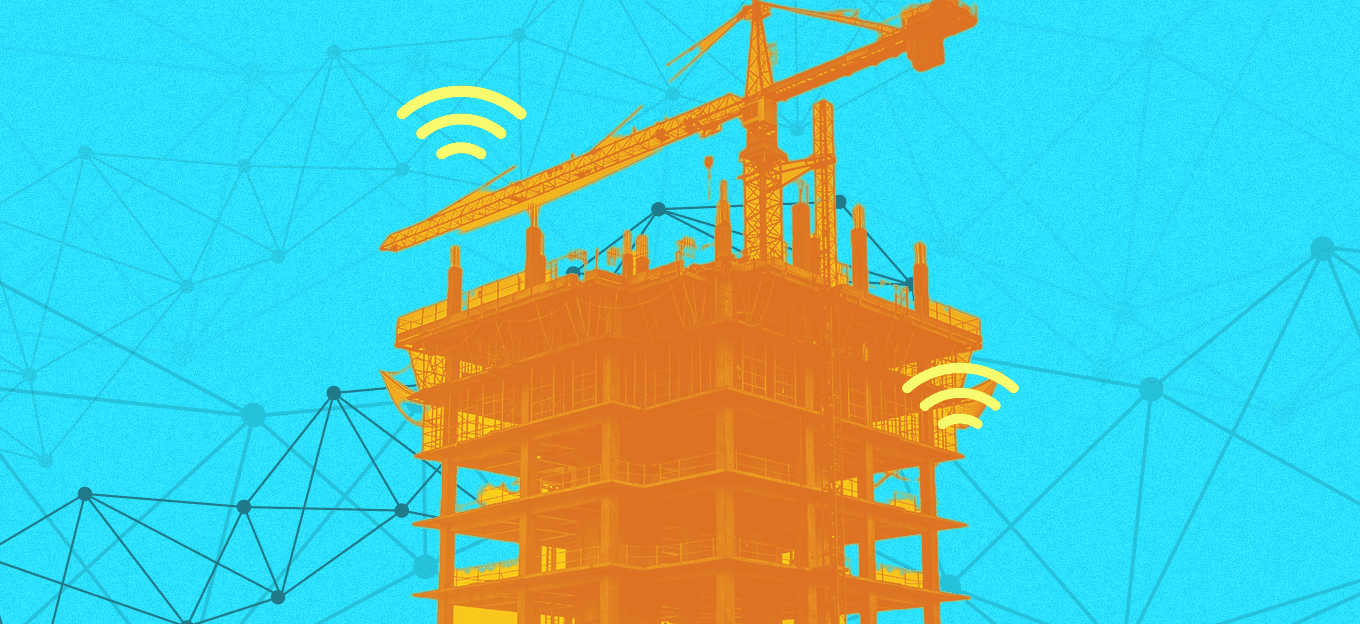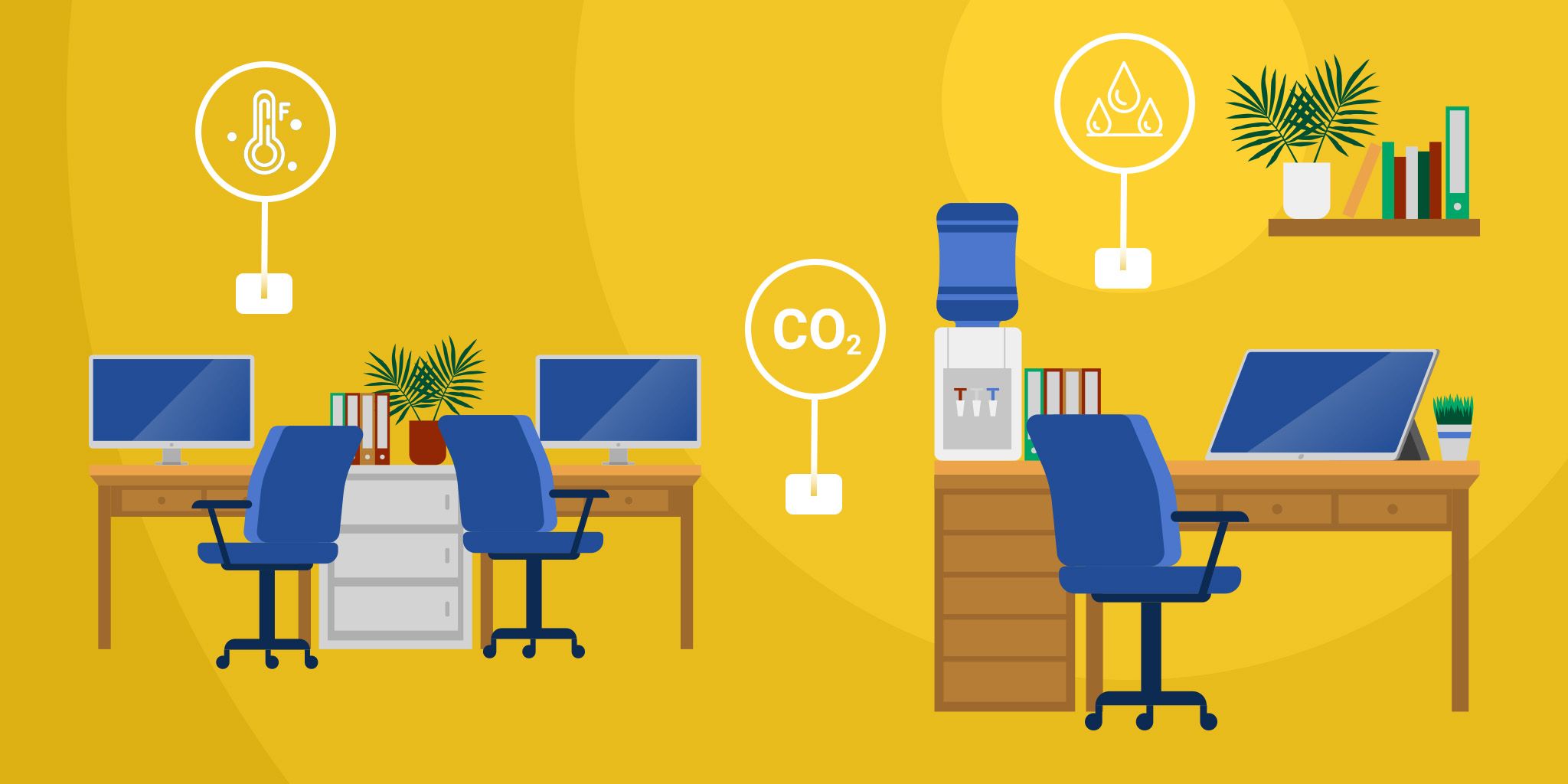IoT: Construction Modernization and a Business Revolution
IoT: Construction Modernization and a Business Revolution
- Last Updated: December 2, 2024
Guest Writer
- Last Updated: December 2, 2024



With the emergence of the Internet of Things (IoT), human ingenuity has outdone itself again. Poised to automate, augment, and optimize the (technology) world in groundbreaking ways, IoT stands on the verge of humanity’s next evolutionary step into creative, commercial, industrial, infrastructural, and consumer innovation.
But for #AVtweeps, revolutionizing interactive technology doesn’t start and end with the smartphones, computers, and tablets we use from day to day.
The Old
A classic (albeit hackneyed) take on IoT envisions a smartphone sensing a person waking up, and in turn signaling their coffee machine to get brewing and scheduling a rideshare pickup. Despite the astonishingly practical capabilities of IoT networks like this, BrightTree Studios Principal and IoT thought leader David Vargo, CTS-D, CTS-I, expects more of embedded technology systems.
“I’m interested in using IoT when we design technology spaces—in terms of modernizing construction methods and creating predictive environments and smarter buildings,” Vargo says.
The New
IoT devices give us this power; we can use sensors to gather information on how spaces are being used, how often, and by whom. For example, in an office with several floors and various spaces on each floor (cubicles, collaboration spaces, conference rooms, lounges, etc.), IoT sensors can monitor occupancy and proximity, taking note of where people are and when they're there.
The sensing itself is not remarkable, but the data collected by these sensors is what can and should inform corporate decisions, both present, and future. More specifically, these data can help employers, owners, corporations, architects, etc., ask some important questions:
- Are people gathering in certain areas of the building based on temperature?
- What technology do employees prefer to use? How, when, and where are they using it?
- Do naturally-lit areas of the office appear to encourage collaboration?
And an analysis of such data can help owners arrive at important conclusions like these:
- Our conference room is used every Monday morning for a video conference call to our headquarters in the UK, so we should find a way to automate conference preparation (lights and technology on, temperature controlled, call scheduled) the moment an executive enters the room.
- We need more collaboration rooms with wireless sharing capabilities because our only one is always in use.
- Employees prefer to make video calls in the early afternoon.
- Our mobile collaboration cart is hardly ever in use.
Vargo’s hope for IoT is that we not only collect and analyze data but also apply the conclusions we derive from it in construction. “IoT is for planning experiences. If we have access to large amounts of user data, we can help our clients understand better ways to work, teach, provide healthcare, and so on,” he says.
Incentivize First, Analyze Second
The first challenge designers and owners face in using IoT here, of course, is the access part. We cannot collect the data we need without incentivizing participation on the users’ end. So what does this look like?
To continue the example of the smart office, imagine a hoteling scenario. As employers minimize floor plans for employees who travel often or work from home, the need for desks and cubicles may decrease significantly for some buildings, leading to the rise of hoteling methods that help employees find and temporarily reserve and use unoccupied workspaces.
Owners can utilize a live hoteling application that documents when, where, and for how long employees are using certain workspaces. (Only through this application will employees be able to schedule time at a workspace, thus incentivizing user participation in data collection.)
If the workspaces are also equipped with sensors for temperature, noise, light, and other such elements, we can uncover the working conditions employees prefer, and adapt the facility to inspire more productivity, creativity, collaboration, and enjoyment in the workplace.
To take another example, consider how IoT solutions might function in retail spaces. If participating users have a retailer’s application on their phones, they get exclusive promotions and better in-store service, and marketers can push ads to these target customers in real time:
- “We noticed you’ve been standing near our best-selling shoes for a little while. Here’s a coupon for them!”
- “Not sure which bag you like most? Tap to compare styles, prices, colors, and more.”
- “You’ve been in our store for 40 minutes. Can our staff help you find anything?”
At an amusement park, users can download an app with a game that utilizes augmented reality. Allowing the app to track where a user spends time and money will reward a user with prizes and AR entertainment.
Vargo likes to imagine pairing experiential IoT with new construction tools like demountable walls in offices, for instance.
“As the acceptance of connected environments grows, so will the opportunity to connect our surroundings through IoT, increasing our knowledge about the world and optimizing the efficiency with which we move through it,” he says.
The Almighty Dollar
Vargo acknowledges the second challenge of IoT in construction modernization—cost. Owners worry about a weak ROI, afraid implementing IoT won’t generate significant profit, or may even cost more than the implementation appears to be worth.
“The outlook is long-term,” Vargo emphasizes. “The process of using and responding to IoT is concerned with the future far more than it is with the present.”
Vargo admits what many technology consultants and designers won’t: it’s impossible to completely future-proof a technology space; there will always be new technologies that we can’t anticipate. “But you can make smart decisions to design adaptable technology spaces that will help your facility be more versatile and last longer.”
Vargo asserts that implementing IoT to collect data on how users interact with different spaces can help owners design systems that communicate with each other to automate tasks, so that buildings automatically observe occupants and change according to use (this can involve HVAC, blinds, lights, technology systems, security, employee identification and location, and more). In the big picture, this allows companies and institutions to generate useful, dynamic, cost-efficient facilities that deliver a fluid experience each time a consumer or employee enters a space.
Vargo says owners should consider an IoT implementation in order to really understand how space and technology are being used and how they can be optimized. Although the transition toward IoT-informed construction will be a gradual process, this much we can predict: implementing smart, connected environments will revolutionize the business and construction worlds, and such a pursuit will be no simple undertaking—innovation like this rarely is.
Written by Christian Na, Marketing Assistant at BrightTree Studios
The Most Comprehensive IoT Newsletter for Enterprises
Showcasing the highest-quality content, resources, news, and insights from the world of the Internet of Things. Subscribe to remain informed and up-to-date.
New Podcast Episode

Moving Past the Pilot Phase in IoT and AI
Related Articles





